From Jarvis in the Iron Man to Skynet in the Terminator universe, Artificial Intelligence has always been depicted as something incredibly advanced, almost all-mighty and all-knowing, often sinister. Despite the fact that public opinion about this concept has already solidified, becoming an integral part of culture, things are not quite as they seem.
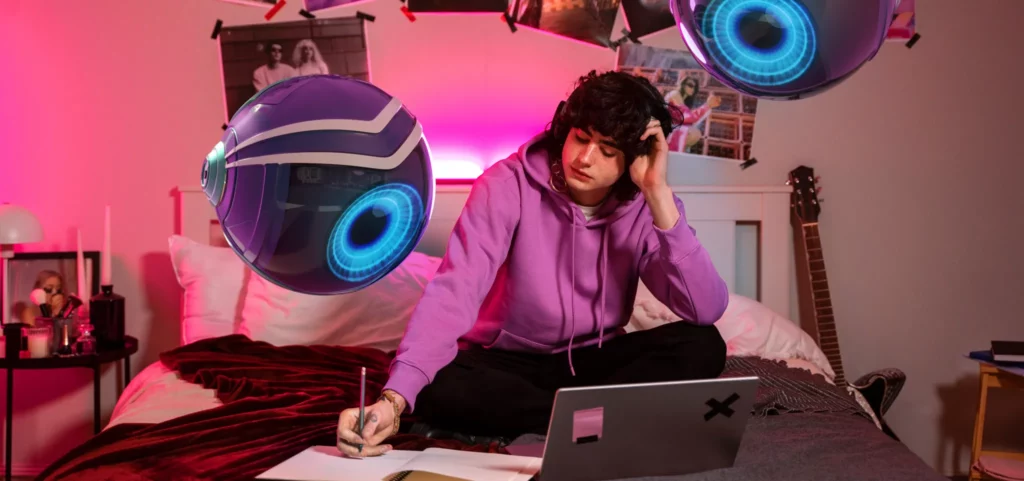
Following the success of the widely talked-about ChatGPT by OpenAI and some similar services utilizing Artificial Intelligence technologies, many individuals in creative and non-creative professions alike, including copywriters, designers, programmers, artists, writers, musicians, and so on, have started to fear that Artificial Intelligence could eventually replace them. But how true is this? What exactly is Artificial Intelligence, how does it impact different professions, and should we be afraid of it? Let’s delve into these details in this article.
How it all began and what AI really is
Before we proceed, it’s important to provide an accurate definition of the term “Artificial Intelligence,” as it is often confused with the concept of “Artificial Consciousness.” Artificial Intelligence started to take shape as early as the mid-20th century. In 1955, when Newell and Simon began to work on the “Logic Theorist”, the field of artificial intelligence did not yet exist. Even the term itself (“artificial intelligence”) would not be coined until the following summer.
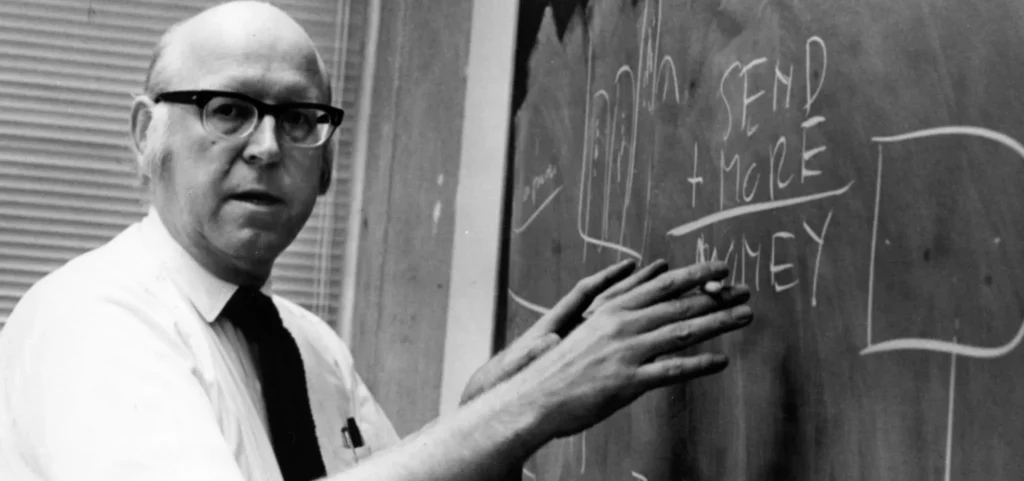
The term “artificial intelligence” was coined by John McCarthy in the proposal for the 1956 Dartmouth Conference. The conference is “generally recognized as the official birthdate of the new science,” according to Daniel Crevier. According to McCarthy, the definition of AI is as follows:
“Artificial Intelligence is the science and engineering of making intelligent machines, especially intelligent computer programs.”
It’s worth noting that both in this definition and overall, Artificial Intelligence is a program or an amalgamation of various programs and subprograms capable of performing specific computations. The earliest example of an artificial intelligence program is the “Logic Theorist,” developed in 1956 by Allen Newell, Herbert A. Simon, and Cliff Shaw. This program was designed to solve mathematical expressions from the “Principia Mathematica,” making them shorter and easier.
At its current state, Artificial Intelligence exists “in a vacuum” and remains inactive without external stimuli, such as human commands or specific triggers. Furthermore, AI doesn’t possess opinions on various matters and, accordingly, cannot express them. It can only provide information on a particular topic or formulate sentences and stories based on data collected from a pre-existing database, similar to how ChatGPT or Bard operate. However, true introspection is within the realm of Artificial Consciousness.
“Artificial Consciousness” is a collective concept developed by philosophers, theorists, and AI engineers. Debates on this topic have been ongoing for years, and there isn’t a clear, universally accepted definition within the scientific community. However, if we attempt to generalize from the examples provided, we can conclude that Artificial Consciousness refers to AI’s ability to imitate or possess certain aspects of human consciousness. The idea of artificial consciousness often relates to questions about whether it’s possible to create artificial systems that not only perform tasks but also have an internal experience and understanding of the surrounding world, along with emotional states.
What specifically falls under the list of “must haves” for an AI to be an Artificial Consciousness depends on individual researchers. For example, “Aleksander, Igor (1995). Mira, José; Sandoval, Francisco (eds.). ‘From Natural to Artificial Neural Computation. Lecture Notes in Computer Science'” proposes the following components that must be present for AI to be considered Artificial Consciousness:
- The Brain is a State Machine.
- Inner Neuron Partitioning.
- Conscious and Unconscious States.
- Perceptual Learning and Memory.
- Prediction.
- The Awareness of Self.
- Representation of Meaning.
- Learning Utterances.
- Learning Language.
- Will.
- Instinct.
- Emotion.
It should be emphasized again that all these “components” are just one of many examples from various reputable researchers and institutions.
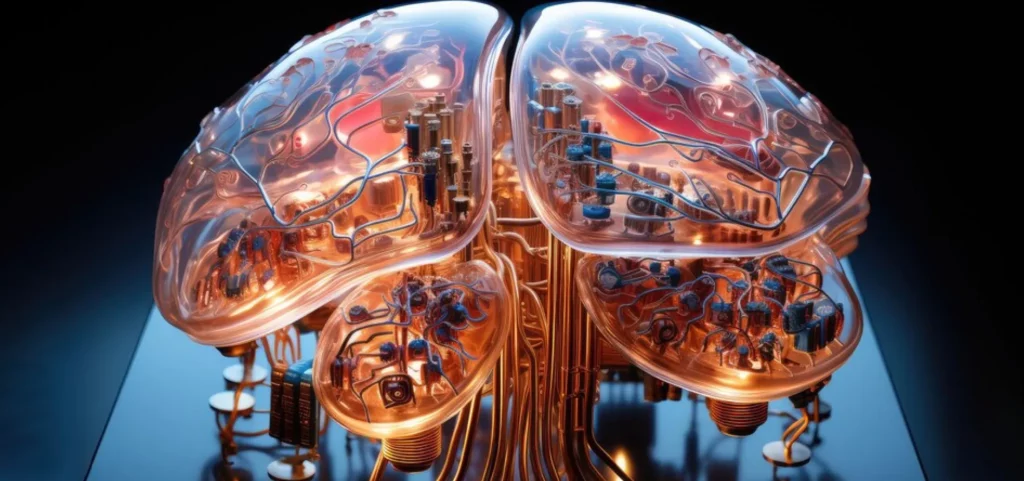
From all that has been written above, we can draw an intermediate conclusion. At its current state, AI systems (at least those accessible to the public) are NOT full-fledged Intelligence. After all, the concept of Intelligence includes abilities such as decision-making based on context or previously acquired data, abstract thinking, and so on. Full-fledged Artificial Intelligence, for instance, could be seen in androids from the video game “Detroit: Become Human.” Systems like ChatGPT, Bard, and others are far from achieving such a result.
OpenAI and its Involvement in the AI Attention Boom
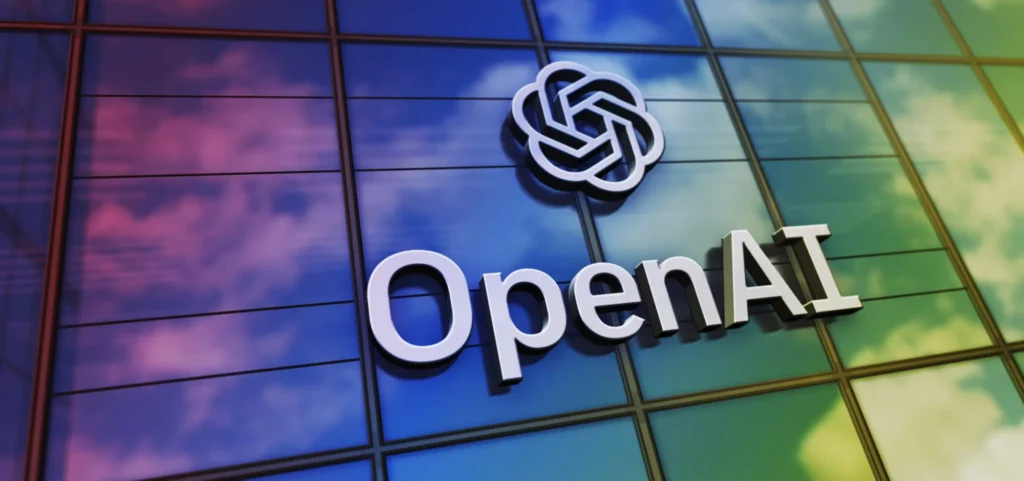
OpenAI (Open Artificial Intelligence) is a research organization dedicated to the development of advanced artificial intelligence technologies. Founded in December 2015, the organization was created with the goal of advancing AI that benefits all of humanity.
The idea of OpenAI was proposed by a group of individuals, including Elon Musk, Sam Altman, Ilya Sutskever, and others, who shared the common aspiration of establishing an organization that develops AI with considerations for societal benefit and ethical aspects. In its early history, OpenAI focused on research in the field of learning and creating AI that could surpass human-level performance in tasks involving natural language processing. The organization showcased its potential with the release of the GPT-2 and GPT-3 models, which generated widespread interest and discussions in the realm of artificial intelligence.
For the public, the “attention boom” around AI came into full swing after the GPT model became accessible to everyone. Undoubtedly, the topic of AI had been raised and discussed prior to this, and it has remained a persistent topic for many years. However, it was OpenAI that demonstrated to the world that Artificial Intelligence can engage in conversation (to a reasonably coherent level) and provide any information that is publicly available, within the bounds of the company’s rules and without violating the law. It showcased that AI isn’t merely a set of programs designed to quickly analyze vast amounts of data and assist companies like Google or Bing. After ChatGPT demonstrated its ability to generate high-quality text content and solve rather complex logical tasks, individuals in creative professions began to ponder whether AI might replace them.
How Important Are Creative Professions?
To begin with, it’s important to clarify that in this article, we will focus on professions that have directly felt the threat from AI. Let’s examine a few of these professions:
- Copywriter. Copywriters craft text for various websites and platforms. When you visit a website like Microsoft official website or a site of a local online store, everything you read has been created by a copywriter.
- Designer. This mainly pertains to web design and all associated aspects. From the appearance of a website to a company’s logo or the design of a “Search” button. Interior designers and architects don’t feel threatened, as AI CURRENTLY cannot replicate their work at the necessary level.
- Musician. AI has already shown the ability to create complete musical compositions – melodies. However, AI cannot create songs (melodies with vocal accompaniment) yet. AI’s creativity isn’t much different from what’s produced by certain mainstream artists. It simply exists. It can be served. But it does not spark joy.
- Writer. This encompasses writers of all kinds – from professionals to enthusiasts creating creative, entertaining, scientific, educational, and other textual materials.
- Programmer. Some neural networks are already capable of writing code. This includes either full-fledged coding “from scratch” (partially achievable by tools like ChatGPT) or augmenting existing code (e.g., through GitHub Copilot).
It’s important to note that representatives of these professions cannot currently be entirely replaced by AI. All their services and work require a deeper understanding of specific business aspects, psychology, target audiences, and more. However, even before the advent of such neural networks, filling a large website quickly required the efforts of an entire team of copywriters, SEO specialists, programmers, and so on.
Currently, a large team can be replaced by a few specialists using AI tools and software. While this doesn’t lead to mass layoffs or a loss of interest to these professions, it might still occur in the future as AI continues to develop and reaches entirely new levels.
What professions can be replaced by an AI?
First and foremost, AI will replace individuals who perform “entry-level” routine tasks. Unlike humans, AI has the capacity to discern incredibly subtle patterns within vast streams of data. Let’s consider a specific example.
We’ll use the example of a loan underwriter in the banking industry. When a borrower submits documents, such a specialist only analyzes certain fundamental documents and indicators—like your net capital, home, place of employment, and so on. A trained AI, placed in the role of such a specialist, can instantaneously calculate thousands of metrics, from various public records to your daily purchases and health status. Needless to say, the verdict reached by AI will be thousands of times more precise.
Other routine professions also fall within the high-risk zone for replacement—accounting, data entry, and others. AI will be capable of conducting all these operations and computations thousands of times faster, without making errors. AI doesn’t need rest, a salary, or vacation time. The advantages for employers are monumental.
Can AI Engage in Creativity?
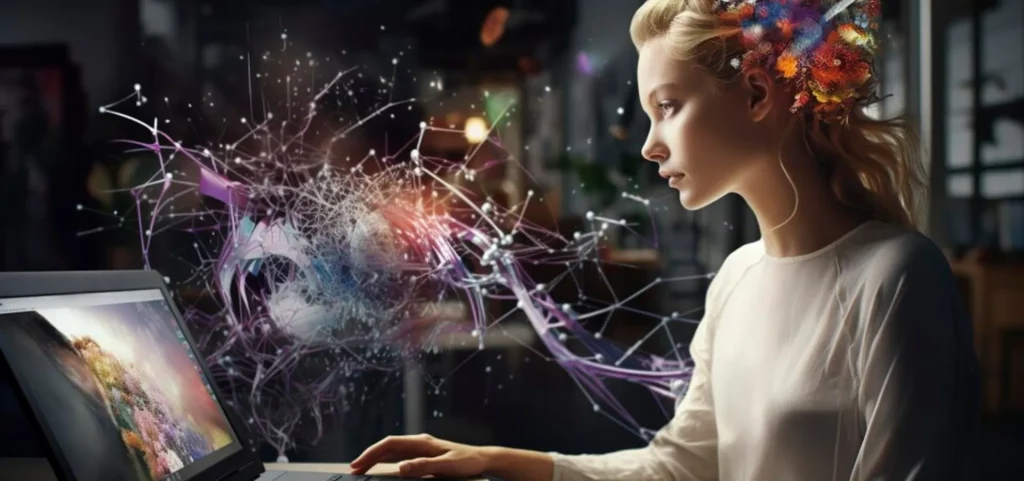
Perhaps many of you have seen the movie “I, Robot” starring Will Smith. During a conversation with one of the robots, he said the following:
“— You’re just a machine. An imitation of life. Can a robot write a symphony? Can a robot turn a canvas into a beautiful masterpiece?”
Even though the technology in that movie was projected far beyond our current level of development by decades or even centuries, that statement remains relevant and holds true in our time. In short, no, AI is not capable of full-fledged creativity. Though, distinguishing between something created by AI and something made by a human might be challenging.
Let’s consider an example. Every year, Sony collaborates with the World Photography Organization to hold a prestigious photography competition – the Sony World Photography Awards. In March 2023, in the Creative category, the German artist Boris Eldagsen won. However, he declined the prestigious award and revealed that the image was entirely created by AI. Later, the artist and photographer expressed the opinion that such contests aren’t yet equipped to handle images created by AI.
AI cannot generate something entirely new, conceptualize, or engage in strategic planning. AI excels at optimizing tasks, performing calculations, or copying things with astonishing precision. AI can also, based on existing works of art, combine various elements to create something resembling a piece of art – an imitation of it. However, it won’t be a fully genuine creation, and there won’t be anything genuinely novel in such a work.
In conclusion, it can be said that AI is not capable of genuine creativity in the sense that humanity understands it. However, AI can certainly enhance and expedite the work of individuals engaged in creative activities.
Early Attempts to Replace Human Creativity with AI
The initial attempts to replace human creativity with artificial intelligence (AI) began in the mid-20th century. In the 1950s and 1960s, researchers experimented with computer programs capable of generating music, artwork, and even literary texts.
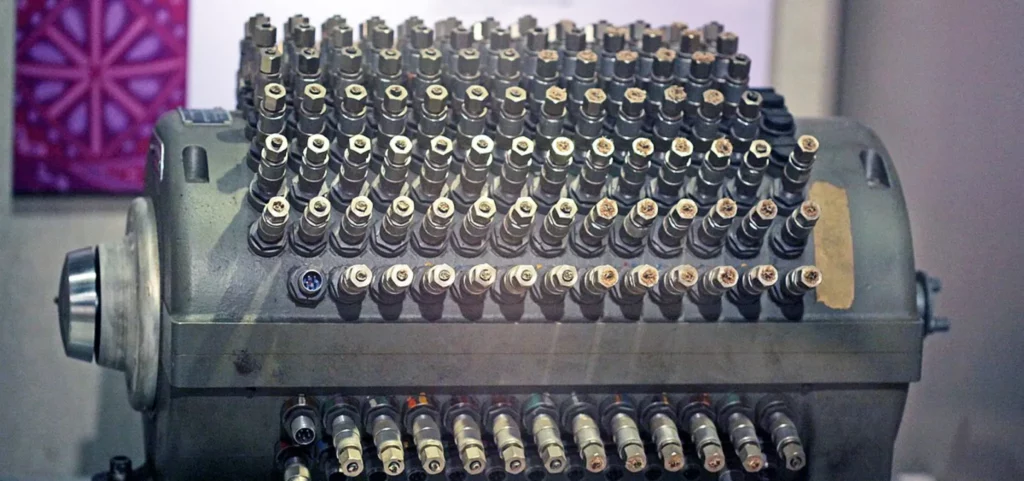
An example is the “ILLIAC Musical Computer,” developed in 1957, which created music based on mathematical algorithms. Attempts were also made to create programs capable of generating poetry and art in the style of specific artists.
However, technological limitations and limited knowledge about the functioning of human creativity at that time constrained the results. Over time, with the advancement of deep learning and neural networks, modern attempts to use AI in creative fields such as painting, music, literature, and design have become more compelling. Nevertheless, questions about originality, emotional depth, and human influence on the creations remain relevant.
Despite the existence of numerous neural networks and AI systems capable of generating “creativity,” such as GANs (generating images resembling photographs), Magenta (creating audio content), GPT (generating textual content), and DALL-E (creating images based on textual descriptions), they all fall short of true creativity. Everything generated by these programs and their counterparts often lacks emotional depth, appearing rather “hollow,” monotonous, and unoriginal.
Obvious Benefits and Limitations of AI
Despite all the concerns from the public and those directly involved in AI development, it has numerous advantages that, however, come hand in hand with limitations.
Here are some of the benefits of AI:
- Data Analysis. AI has the ability to analyze vast amounts of data. Tasks that previously took dozens or hundreds of people extended periods of time can now be performed in mere seconds. This is particularly valuable in marketing, search engine optimization, pattern recognition, and more.
- Automation and Optimization. AI can automate and optimize simple and routine tasks. For example, assembly line robots automating manufacturing processes.
- Prediction and Analytics. Using machine learning algorithms, AI can predict trends and outcomes based on data, aiding in making more informed decisions. However, this applies to data and trends that are not subject to rapid changes. Predicting human behavior with 100% accuracy, for instance, is likely impossible due to the fluidity of human choices.
- Medicine. AI can have a significant impact on medicine by identifying diseases at early stages, analyzing medical images, and more. In 2022, a new method of MRI (synthetic correlated diffusion imaging) was developed using AI to analyze images of previous cases of breast cancer to predict a patient’s response to chemotherapy. You can read more here.
- Research and Innovation. AI can aid in finding new solutions, conducting complex calculations and simulations, leading to the development of new technologies and scientific discoveries.
However, AI also has its specific limitations and drawbacks:
- Lack of Empathy and Genuine Conversation. Current AI lacks empathy and the ability to engage in genuine human-like conversations. It cannot replace or assist in professions that require high levels of social interaction.
- Contextual Understanding. AI doesn’t comprehend the world as humans do. It struggles to understand context and nuances, potentially leading to incorrect conclusions or actions.
- Lack of Creativity and Intuition. AI lacks the ability of creative thinking and finding unconventional solutions.
- Privacy and Security. The use of AI raises concerns about data privacy and security, as it often involves processing vast amounts of personal information.
- Responsibility and Ethics. AI’s autonomy in decision-making brings up questions about responsibility for its actions, especially when they have significant consequences and may conflict with established human ethics. As an example, an old IBM presentation quote resurfaced: “A computer can never be held accountable, therefore a computer must never make a management decision.”
In summary, while AI offers many advantages, it also has limitations that stem from its current capabilities and the inherent differences between AI and human cognition.
AI can still be useful
The modern world is rapidly moving towards automation and process optimization. And artificial intelligence (AI) is becoming a key tool for many professional fields, among which we can highlight copywriting, design, marketing, and SEO optimization. Let’s examine how AI is revolutionizing work in these areas.
AI for Copywriters
Creating unique and high-quality content can be a challenge for copywriters. However, thanks to modern neural networks like OpenAI’s GPT-3, copywriters can receive assistance in generating texts. GPT-3 is capable of creating articles, product descriptions, ad copies, and even press releases based on a brief description of the task. This tool reduces the time needed for content creation and provides copywriters with more space for creativity.
AI for Designers
Artificial intelligence also finds its application in design, allowing for the creation of unique and visually appealing elements. An example is the application Artbreeder, which uses GAN technology to create new images based on existing ones. Designers can blend and modify images, producing astonishing compositions.
AI for Marketers
Marketing requires data analysis and predicting consumer behavior. Machine learning algorithms and neural networks assist in this. Programs like HubSpot use AI to analyze customer behavior, providing marketers with information about optimal email sending times, recommendations, and personalized approaches.
AI for SEO Specialists
SEO optimization plays a crucial role in website visibility in search engines. AI can simplify this process by offering tools for keyword analysis, monitoring site positions in search results, and content optimization. An example is the Moz tool, which helps SEO specialists identify the best keywords, track positions, and analyze competitors.
Thus, AI isn’t yet capable of fully replacing these professionals, but it can significantly speed up their work and enhance quality by taking on routine tasks and performing them without the errors a human might make.
Does the future belong to Mankind?
This question is quite philosophical. Will AI destroy all of humanity, as Skynet did in the Terminator universe, or aspired to by Ultron in Iron Man? Will AI be a (mostly) faithful servant of humans, as depicted in Detroit: Become Human? Will we coexist relatively peacefully, as in Philip K. Dick’s novel “Do Androids Dream of Electric Sheep?”
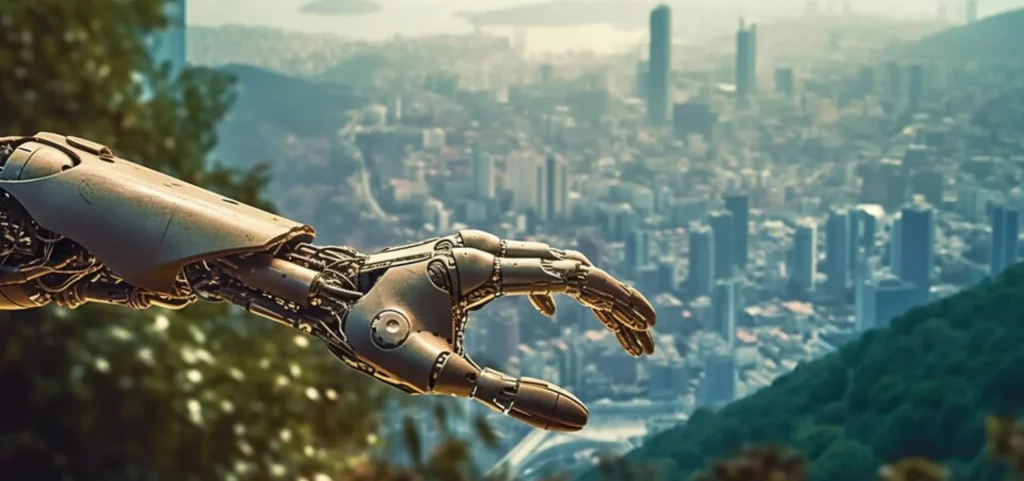
Answering all these questions is currently impossible. It’s already clear that AI is influencing the development of humanity, largely by assisting and simplifying tasks that used to take countless hours, days, weeks, or even years. But can we create something that can feel and be self-aware? Something that can love, hate, or express compassion? Something that, upon looking at it, you can’t discern whether it’s a human of flesh and blood or a machine?
The words and opinions of many experts on this topic widely vary. Only one thing can be said with certainty – at this current stage of technological development, it’s likely not possible. But sooner or later, technology will advance. And if we lag behind, allowing it to overwhelm us, it could indeed become the end of humanity, as some conspiracy theorists and paranoids predict.





